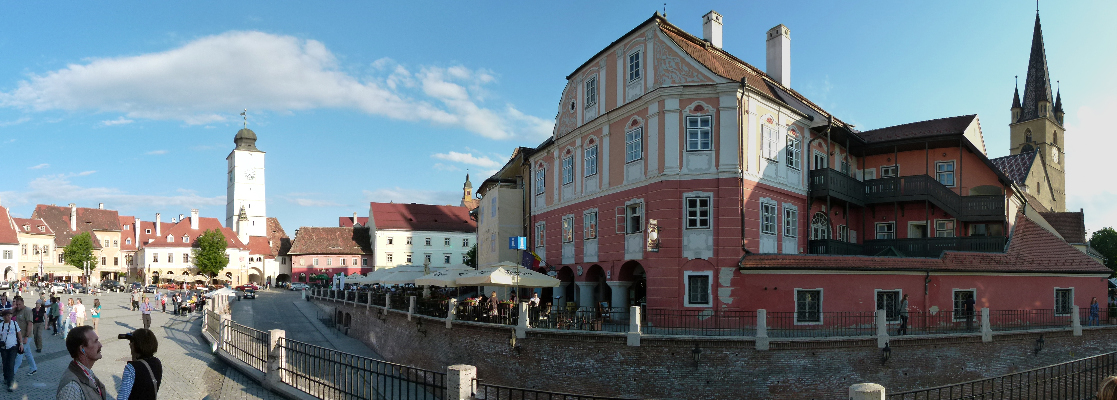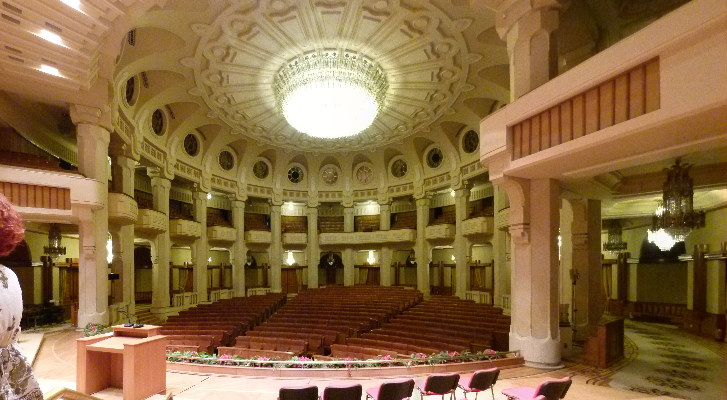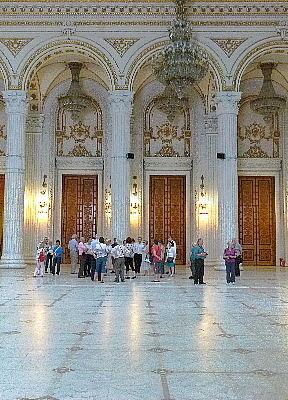This church is much smaller then it seems.
The door is less than 5 feet high.
Sculpture (I guess) in a field.
As we were coming into Sibiu we saw a couple of signs that brought us back to the present.
Though I am not sure why it takes so long to be instantly relaxed.
Part of the wall that once circled the city.
Some interesting architecture near the center of town.

These two pictures take in a 360 degree panorama of the town square.


The Holy Trinity Orthodox Cathedral.
A stone farm ruin along the river about 30 miles south of Sibiu.
And a little further the Saint Manastirea Cozia.
More stripes and some depictions of the violent torture that awaits many of us in the afterlife.
One of many wells outside the wall in front of nice suburban homes.
It wasn't unusual to see a family traveling by horse drawn wagon.
Poppies in abundance.
Soviet era apartments as we enter Bucharest.
That would be a blood bank, right?
The Arc de Triumphe in Bucharest was built in 1936.
It stands on the site of previous triumphal arches (some wooden) that have been located there since their independence in 1878.
The Central Library of Bucharest and King Carol riding out front.
During the Romanian Revolution of 1989, a fire destroyed over 500,000 books and 3,700 manuscripts.
Within a few months repairs were begun but were not completed until 2001.
One of the sculptures in the Revolution Square.
Locals call it the potato on a spike.
Spike also has the meaning "to con".
A fountain on the boulevard in front of the "People's Palace."
The Palace of Parliament is the largest parliament building in the world and the heaviest building and most expensive of any sort.according to Wikipedia.
There are several other ways to measure size (volume, floorspace, footprint) and doesn't make the top ten in any of those.
But by any measure it is huge.
The size is hard to comprehend but consider that it is made up of:
35,000,000 cubic feet ((1,000,000 cubic meters) of marble
318,000,000 cubic feet (900,000 cubic meters of wood)
3500 tones of crystal
2,200,000 square feet (200,000 square meters) of carpets
and has 2800 chandeliers
Construction was begun in 1984 under Nicolae Ceaușescu the General Secretary of the Romanian Communist Party.
It was nearly complete at the time of the Romanian revolution and his death by firing squad in December of 1989.
This grand hallway showcased sculptures
And this one Romanian fashion through the ages.
The theater has no backstage space or dressing rooms so isn't used for productions.

Another of the vast open spaces made with Romanian marble.

And one of many staircases.
More sculptures, these honoring the country's workers.
These doors must have been over 18 feet tall.

Some doors had been sealed so that the guards would know if anyone had entered so they would need to be searched.
The view from the front porch.
The boulevard at the center is one meter wider than the Champs-Elysees in Paris.
The building on the left is the National Agency for Fiscal Administration and on the right the Ministry of Environment and Climate Change.

